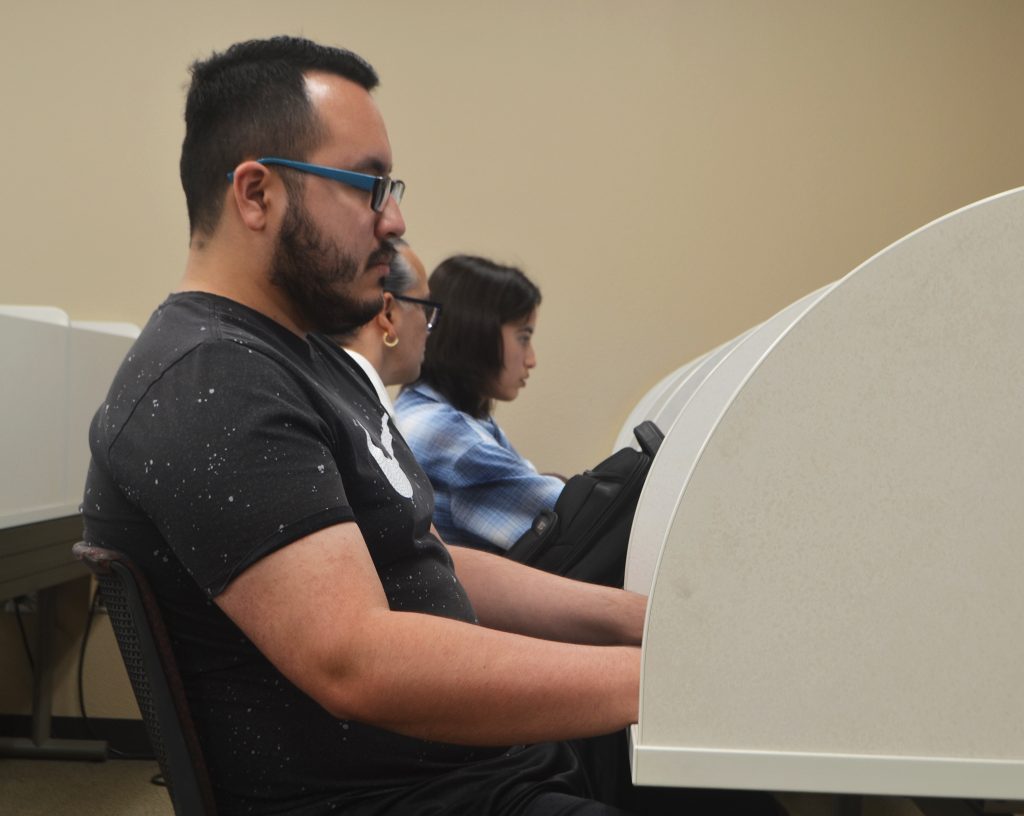CAMPUS: Financial Aid Simplification Act changes FAFSA process
By Alexia Aleman
Bridge Staff Podcaster
And Jorge Espinoza
Social Media Co-Manager
Published Thursday, Feb. 22, 2024
TAMIU holds its annual FAFSA Drive to help students navigate the changes implemented in the new FAFSA application. Financial aid staff assist students with the process during these drives, as well as answer questions.
The priority deadline for FAFSA is scheduled for March 15.
Over the past three years, the Department of Education implemented certain changes as part of the FAFSA Simplification Act. The final phase is slated for the 2024-25 Award Year.

An unidentified student files a FAFSA application on Tuesday, Feb. 6, in the testing center in the Sen Zaffirini Success Center.
“The application is going from 100+ questions to about 46, depending on your answers,” Texas A&M International University Director of Financial Aid Laura Elizondo said. “Now the big question is, ‘Yes, I approve as a contributor,’ meaning ‘Yes, I contribute information into the FAFSA.’ The contributor is the student, parent and—if the student is married then—the spouse. Every contributor has to agree to say, ‘Yes, I consent that you use my information.’ That includes your IRS information.”
An important change is that all FAFSA applicants must now use the IRS Direct DATA exchange to share tax information.
“The Expected Family Contribution number, that magic number that determines your PELL, is being replaced with the Student Aid Index,” Elizondo said. “Before, your EFC was zero to 999. Now, the SAI will start from negative 1,500. You will qualify for the same aid if your number is zero or negative, but there’s a difference between a student who has a negative number and student who has a zero number, which we will have to figure out and use to package the financial aid we have for you.”
The new application utilizes the SAI instead of the EFC, which calculates differently. The SAI equals the student’s or family income and assets. Assets include family farms or ranches and small businesses. Homeless youth, students in foster care or students with a court-warded guardian have their status carried over to successful aid years.
Employees in the Office of Financial Aid underwent training to adapt and understand the new changes for the process, and to ensure quality when assisting students with financial aid.
“Our staff members have attended numerous webinars and conferences to get the latest information to better assist our students,” Priscilla Y. Munoz said.
Interested students with questions about these changes may attend the FAFSA drives for assistance.
